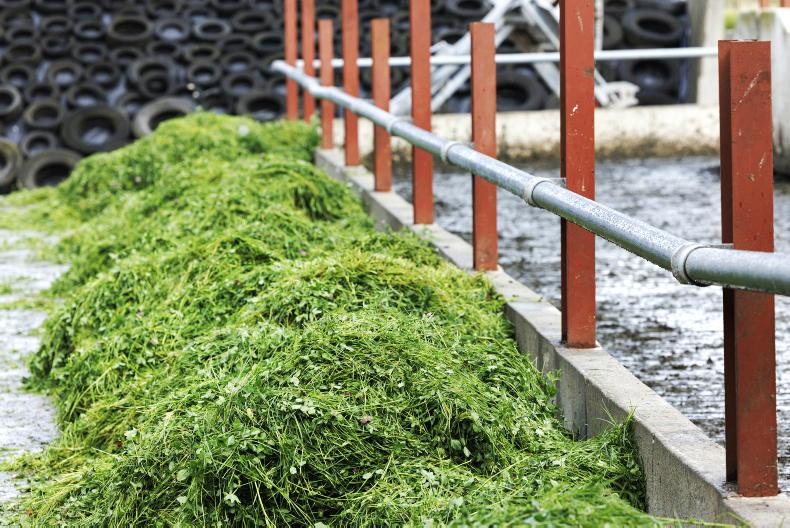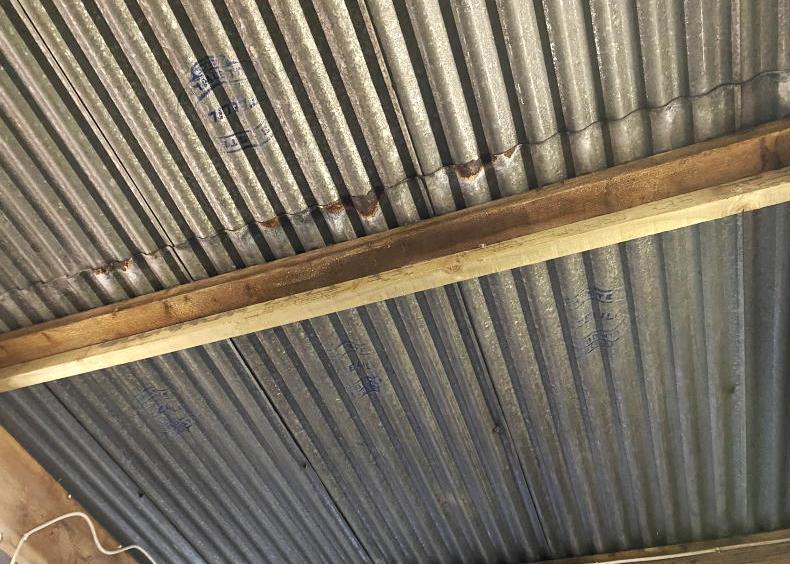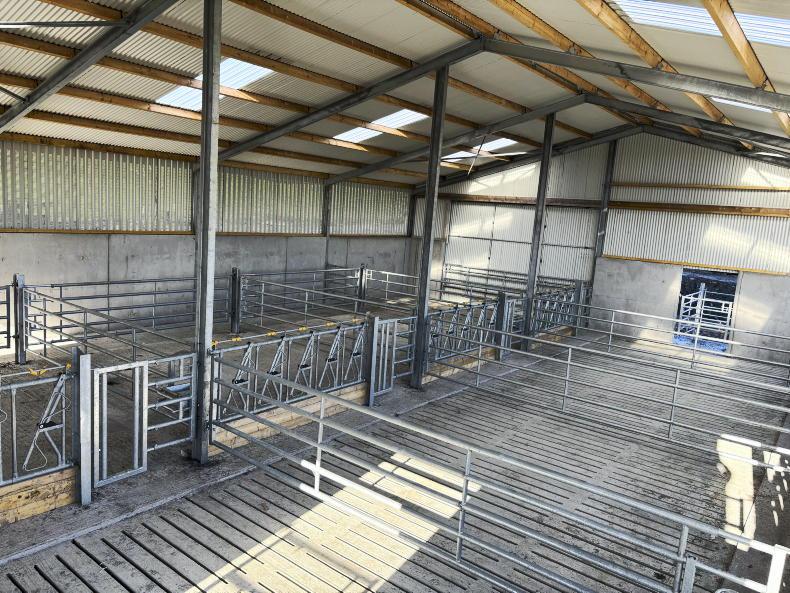Slurry storage seems to always be in the limelight when it comes to farm developments, and department rules, in the last few years, with farmers keen to increase storage where possible to better utilise nutrients, prevent runoff to watercourses and stay above the law. Changes to minimum requirements on both soiled water and slurry storage have been continually happening over the past few years, with legislation becoming stricter and storage capacities increasing.
Minimum requirements for slurry
For each dairy cow on a farm, a minimum of 0.33m3/week of slurry storage is required, equivalent of 74 gallons. A typical 100 cow herd requiring 16 weeks minimum storage will therefore need 528m³ of storage (116,143 gallons). However, having 528m³ of storage is not enough. 200mm of freeboard, a gap between the top of the slurry and the bottom of slats, is required to allow for agitation and to prevent animal welfare issues. The recommendation by the Department is to have 20% of a buffer for dairy farms and a 10% buffer for drystock past the minimum requirement. Suckler cows require a minimum 0.29m³/head/week, with a full list of requirements listed below.

Caution needs to be exercised surrounding buffer feeding, with run off from feed areas classed as slurry.\ Donal O' leary
Where tanks are located outdoors, the rainfall that will enter the tank will have to be subtracted from the slurry capacity. In order to do this, the mean rainfall for the closed period in your county (eg 450mm over the 16-week period) will have to be subtracted from the tank depth when calculating capacity.
Soiled water storage
Soiled water storage increased to three weeks of a minimum requirement last year, with a closed period for spreading soiled water running from 10-31 December this year. This requirement jumps to four weeks storage this year (1-31 December of a closed period) bar those producing winter milk, who have until 2025 to increase their storage to four weeks.
Current recommendations from Teagasc would be to allow for 30l/cow for every cow in the herd when calculating requirements. Teagasc are currently working on some of their own farms and a host of other dairy units across the country to establish a more accurate figure for the minimum storage, as this 30l per cow is based on figures dating back to the mid-00s.
Increased capacity for TAMS
Farmers looking to utilise the TAMS Dairy Equipment Scheme (DES) should be aware that an increased storage requirement exists.
Farmers opting for the DES require an additional 10% storage on top of the minimum required by the Department. This storage must be either on-farm or be in a long-term lease.
Covering of slurry stores
Measures introduced in the Department’s climate action plan back in 2020 stated that from 1 January 2022, all newly constructed external slurry stores are required to be covered. The governing around this is ambiguous, but in any case, it is good practise to do so.
In addition, the plan states that all existing external slurry stores should be covered as soon as practically possible, but no later than 31 December 2027.
This measure is in an effort to reduce ammonia losses from the stores, keeping more of the valuable nitrogen in the slurry, with the added benefit of a reduction in chemical nitrogen usage envisaged.
Ireland’s agricultural industry is responsible for 99% of the county’s ammonia emissions.
The rate of ammonia loss is influenced by the air moving over the top of the slurry, so covers will likely be required to prevent air coming in to contact with the slurry.
This means two things; it is not a requirement that the cover prevents rainwater entering the slurry storage (eg slats), but also means that evaporation of water (which can be as high as 30%) will likely be reduced with any introduction of a cover. For farmers who are already tight on storage space in an uncovered tank, a cover to prevent rainwater entering is likely the more suitable option.
Efficient utilisation of storage
With pressure on slurry storage on farms, every effort should be made to utilise storage efficiently. Runoff from clean yards should not be entering slurry tanks, while effluent channels from silage pits should be diverted as clean water runoff and not directed towards tanks after the initial effluent has been drawn off pits. In order to avoid pollution of nearby watercourses, the pit floor should be regularly cleaned to prevent nutrients (muck from tyres, dropped silage etc) from contaminating the water runoff.
Leaks in roofs and gutters that are allowing rainwater into tanks should be fixed immediately. Particular attention should be given to valley gutters as these are prone to leaking, while older Perspex (clear) sheeting can also become brittle due to UV damage and can crack. Water troughs fittings and pipes should all be regularly inspected to ensure there are no leaks present.
Soiled water is classed as having 1% of a dry matter concentration or less, so small volumes of dung going in to soiled water tanks will quickly lead it to being classed as slurry with the increased holding period of 16 weeks plus.
Buffer feeding on collection yards at the shoulders of the year or in periods of drought will quickly change the storage requirements.
Slurry storage seems to always be in the limelight when it comes to farm developments, and department rules, in the last few years, with farmers keen to increase storage where possible to better utilise nutrients, prevent runoff to watercourses and stay above the law. Changes to minimum requirements on both soiled water and slurry storage have been continually happening over the past few years, with legislation becoming stricter and storage capacities increasing.
Minimum requirements for slurry
For each dairy cow on a farm, a minimum of 0.33m3/week of slurry storage is required, equivalent of 74 gallons. A typical 100 cow herd requiring 16 weeks minimum storage will therefore need 528m³ of storage (116,143 gallons). However, having 528m³ of storage is not enough. 200mm of freeboard, a gap between the top of the slurry and the bottom of slats, is required to allow for agitation and to prevent animal welfare issues. The recommendation by the Department is to have 20% of a buffer for dairy farms and a 10% buffer for drystock past the minimum requirement. Suckler cows require a minimum 0.29m³/head/week, with a full list of requirements listed below.

Caution needs to be exercised surrounding buffer feeding, with run off from feed areas classed as slurry.\ Donal O' leary
Where tanks are located outdoors, the rainfall that will enter the tank will have to be subtracted from the slurry capacity. In order to do this, the mean rainfall for the closed period in your county (eg 450mm over the 16-week period) will have to be subtracted from the tank depth when calculating capacity.
Soiled water storage
Soiled water storage increased to three weeks of a minimum requirement last year, with a closed period for spreading soiled water running from 10-31 December this year. This requirement jumps to four weeks storage this year (1-31 December of a closed period) bar those producing winter milk, who have until 2025 to increase their storage to four weeks.
Current recommendations from Teagasc would be to allow for 30l/cow for every cow in the herd when calculating requirements. Teagasc are currently working on some of their own farms and a host of other dairy units across the country to establish a more accurate figure for the minimum storage, as this 30l per cow is based on figures dating back to the mid-00s.
Increased capacity for TAMS
Farmers looking to utilise the TAMS Dairy Equipment Scheme (DES) should be aware that an increased storage requirement exists.
Farmers opting for the DES require an additional 10% storage on top of the minimum required by the Department. This storage must be either on-farm or be in a long-term lease.
Covering of slurry stores
Measures introduced in the Department’s climate action plan back in 2020 stated that from 1 January 2022, all newly constructed external slurry stores are required to be covered. The governing around this is ambiguous, but in any case, it is good practise to do so.
In addition, the plan states that all existing external slurry stores should be covered as soon as practically possible, but no later than 31 December 2027.
This measure is in an effort to reduce ammonia losses from the stores, keeping more of the valuable nitrogen in the slurry, with the added benefit of a reduction in chemical nitrogen usage envisaged.
Ireland’s agricultural industry is responsible for 99% of the county’s ammonia emissions.
The rate of ammonia loss is influenced by the air moving over the top of the slurry, so covers will likely be required to prevent air coming in to contact with the slurry.
This means two things; it is not a requirement that the cover prevents rainwater entering the slurry storage (eg slats), but also means that evaporation of water (which can be as high as 30%) will likely be reduced with any introduction of a cover. For farmers who are already tight on storage space in an uncovered tank, a cover to prevent rainwater entering is likely the more suitable option.
Efficient utilisation of storage
With pressure on slurry storage on farms, every effort should be made to utilise storage efficiently. Runoff from clean yards should not be entering slurry tanks, while effluent channels from silage pits should be diverted as clean water runoff and not directed towards tanks after the initial effluent has been drawn off pits. In order to avoid pollution of nearby watercourses, the pit floor should be regularly cleaned to prevent nutrients (muck from tyres, dropped silage etc) from contaminating the water runoff.
Leaks in roofs and gutters that are allowing rainwater into tanks should be fixed immediately. Particular attention should be given to valley gutters as these are prone to leaking, while older Perspex (clear) sheeting can also become brittle due to UV damage and can crack. Water troughs fittings and pipes should all be regularly inspected to ensure there are no leaks present.
Soiled water is classed as having 1% of a dry matter concentration or less, so small volumes of dung going in to soiled water tanks will quickly lead it to being classed as slurry with the increased holding period of 16 weeks plus.
Buffer feeding on collection yards at the shoulders of the year or in periods of drought will quickly change the storage requirements.











SHARING OPTIONS